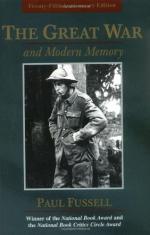
|
| Name: _________________________ | Period: ___________________ |
This test consists of 5 multiple choice questions, 5 short answer questions, and 10 short essay questions.
Multiple Choice Questions
1. The farmers who continued to work their fields behind the lines were surrounded by what?
(a) Troops.
(b) Fences.
(c) Rumors.
(d) Guards.
2. What was the difference between British commanders Haig and Plumer?
(a) Imagination.
(b) Experience.
(c) Strategic planning.
(d) Training.
3. What time in the morning did the day begin for the troops in the trenches?
(a) Four oclock.
(b) Three thirty.
(c) Five thirty.
(d) Four thirty.
4. About how far from the enemy were the first line of troops stationed in the trenches?
(a) Fifty yards.
(b) One hundred fifty yards.
(c) Two hundred fifty yards.
(d) Two hundred yards.
5. Some rumors fed many _____.
(a) Poems.
(b) Lies.
(c) Short stories.
(d) Folktails.
Short Answer Questions
1. What did men use to see out of the trenches?
2. What author does Fussell mention in representing the idea of crucifixion?
3. According to this crucifixion story, who stood around until this soldier died?
4. At the beginning of World War I, who was the British commander?
5. What country's submarines were active in the Atlantic and ultimately brought America into World War I?
Short Essay Questions
1. What was wrong with the British commander Sir Douglas Haig's war planning?
2. What was the British's army biggest problem?
3. What types of rumors and myths surrounded the number three?
4. What is the title of the third and final volume of the trilogy by Siegfried Sassoon, and what is the third volume about?
5. What happened to the trenches when the wars ended?
6. Explain some of the rumors about farmers during wartime.
7. Name some assumptions made by the British on entering the war?
8. What was the difference between British commanders General Sir George Plumer and Sir Douglas Haig?
9. What was the British Line?
10. Fussell uses a variety of works by Sigfried Sassoon that he discusses in the book. What is the title of the first volume of Sassoon's trilogy, and what is the first volume about?
|
This section contains 693 words (approx. 3 pages at 300 words per page) |

|




